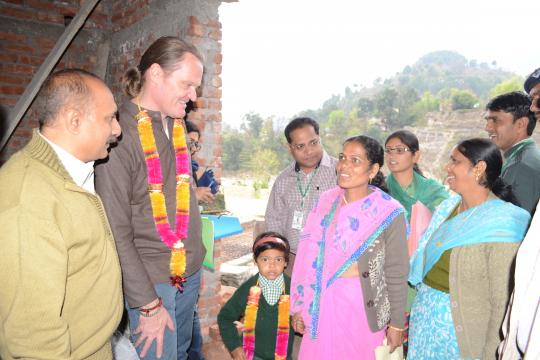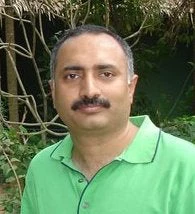
But unlike late last year, when Usha Devi despaired of ever rebuilding her home, she now displays a new hope and determination. “I was given the choice about what kind of house I want. I have now decided to build my house myself,” she asserts boldly, the gleam in her eyes reflecting her new-found pride and confidence.
And she is not alone. In the community meeting at Gabni village in Rudraprayag district in May 2014 - conducted under the World Bank-funded Uttarakhand Disaster Recovery Project - all those who had lost their homes also talked about a new sense of empowerment – of being in charge of their own lives.
Their attitudes had changed after the project began to communicate proactively with them. The project team informed the people clearly and transparently about who is eligible to get a new house, what options are open to them, and how these options are to be implemented.
But it was not always so. Initially, given the difficult terrain and the need to speed up reconstruction, the authorities had decided that those who had lost their homes should be allowed to choose between pre-engineered resilient housing which can be constructed quickly, and owner-driven housing which may take longer to build but would allow each family to rebuild according to its own specific needs. This change of thinking was reflected in the policy announced by the Uttarakhand Government for reconstruction.
However, during a field visit in Dec 2013, it was observed that people were not really aware of what the project aimed to do, nor about the housing choices open to them.
Many were not clear what a pre-engineered house was. “It seems to be made of plastic,” said Rajesh Uppal from Village Joshiyada in Uttarkashi, reflecting the level of misunderstanding prevailing within the community. “I am not sure how strong it will be in an earthquake or flood.”
Expressing a contrary opinion, Chandra Mohan from Village Astal Gunalgaon remarked: “It is better to take the pre-engineered house on offer, because, getting money from the government might take forever and be a big source of worry.”
Communicating with the beneficiaries
Sensing the high levels of misunderstanding among the people, the project team, based in Dehradun, with the assistance of the World Bank, reached out to beneficiaries in a number of ways.

A communication strategy was drafted to enable: 1) a better understanding of the project; 2) the broader engagement of the community/beneficiaries; and 3) greater transparency and accountability thereby creating a basis for concerted action. Meetings were organized where those who had lost their homes were told in detail about the options available to them, as well as their rights and obligations for the construction of their new homes. A TV clip explaining the options was prepared and telecast on the local news channel. And an audio clip was aired on the radio.
Model pre-engineered houses were constructed in each district headquarters and beneficiaries were invited to examine them. In a few places, buses were hired to bring in beneficiaries to take a look at the model houses.
To ensure total transparency, the reconstruction policy, in the local Hindi language, was displayed in all the Panchayat Bhavans (village level government offices) of the affected villages, and lists of beneficiaries were placed online. as well as at every district and panchayat office.

Changing minds
These measures brought about a dramatic change in people’s choices. Armed with a better understanding of the options available to them, all the beneficiaries switched from pre-engineered housing to the owner-driven construction of their homes.

Six months later, in May 2014, the villagers of Gabni proudly shared their plans for their future homes with Onno Ruhl, the World Bank Country Director. They showed Ruhl their consent to adhere to making houses disaster resilient, as well as geological reports that showed that their houses were to be built at a safe location.
The village head, Vishweshwari Devi, a beneficiary too, displayed her owner-driven construction booklet to show that the house she is constructing is based on the layout suggested for resilient housing. And she is not alone; more than half the project’s 2,500 or so beneficiaries have started rebuilding their houses on their own, based on guidelines issued by the project for disaster resilient housing. What’s more, the project has used the opportunity to promote the building of toilets with every home.
Although reconstruction has just started, and all the challenges involved have not yet been resolved, the people’s new sense of ownership and drive is sure to carry the process through. The new houses will not only be the homes they have longed for but will also provide safe shelter in case disaster should ever strike the region again.


Join the Conversation